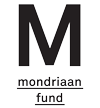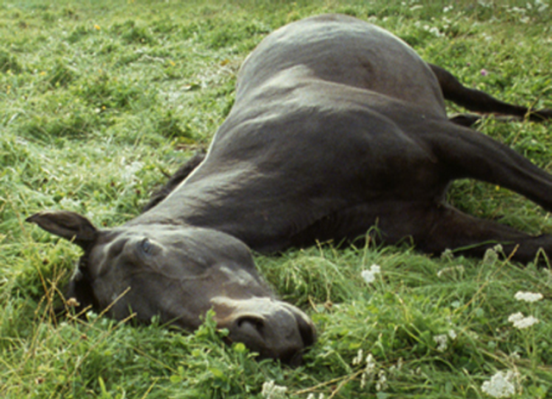Stedelijk Museum Amsterdam acquires two works by artist and filmmaker Steve McQueen
News — Mar 3, 2013
Amsterdam, Monday, March 3, 2014 — The Stedelijk Museum Amsterdam has acquired two works by British artist and filmmaker Steve McQueen, who yesterday was awarded the Oscar for Best Film for 12 Years a Slave. The purchase of McQueen’s Mees, After Evening Dip, New Year’s Day, 2002 from 2005 and Running Thunder from 2007 was possible thanks to the generous support of the Titus Fonds of the Rembrandt Vereniging, the Mondriaan Fund and the BankGiro Loterij.
Bart Rutten, visual arts curator of the Stedelijk Museum: “We are extremely proud of this dual acquisition. The museum maintains a fruitful, long-established relationship with Steve McQueen, and already owns a notable work by the artist. Moreover, he collaborated with the Stedelijk on an extraordinary project in 2012―Blues Before Sunrise, located in the Vondel Park. This acquisition also crowns the work of Ann Goldstein. Our efforts to secure the acquisition were initiated under her directorate. This will be her last purchase.”
In combination with 7th November, which is already in the collection, the two newly-acquired works can be read as a diptych. Informed by social issues, the films incisively reveal the power of movement, pacing and cinematic narrative in an image of reality reproduced with the camera.
Mees, After Evening Dip, New Year’s Day, 2002, a photo in a lightbox with a color transparency defines McQueen’s approach: he captures a crucial moment―hinting at what has happened and what is still to come―in a single image. A trembling boy on a beach clasps a towel around him; he has just taken the New Year’s dip in 2002. It is the first New Year after the irreversible events of 9/11 in 2001. Mounted within the lightbox, the still image of the shivering Mees attains the status of a film projection, with the suggestion of movement and the passage of time.
Running Thunder is a 16mm, soundless color film lasting around 11 minutes, screened as a loop. It appears to show a horse resting in a meadow; the shot is static. The grass around the horse waves in the wind and a fly circles the animal, eventually settling on its eyeball. When the horse does not blink we suddenly realize that the animal is no longer moving.
Its tail is motionless. The animal is dead, and has been for some time. The title of the work, Running Thunder, is misleading, evoking associations with horse races, speed and (horse)power. Running Thunder also seems to be a reference to ‘the silence’ before the storm. The static registration conjures up an unanticipated tension which, in traditional cinema, is created through the use of sound and movement.
Steve McQueen (GB, 1969) lives and works in London and Amsterdam. He studied at Chelsea College of Art and Design, London (1989-1990), Goldsmiths College, London (1990-1993) and Tisch School of the Arts,
New York University (1993-1994). McQueen began his training at art school, followed by film school: his oeuvre is typified by a subtle combination of visual art and film, and his recent films have been made for the general public. McQueen has been awarded numerous prizes for his work including ICA Futures Award (1996) and the Turner Prize (1999).
The broad public are mainly familiar with McQueen as a director of movies. At the same time, the artist questions the conventions of the commercial film industry by exploring confrontational and disturbing themes such as in the films Hunger (2008), Shame (2011), and 12 Years a Slave (2013), for which he won the Oscar for Best Film yesterday. In his visual art work, McQueen utilizes the tools of cinema in different ways. Blues Before Sunrise is an example of a project in which he employs the conventions of popular film―where the color blue is traditionally used to convey a sense of mystery, alienation and suspicion―in a public installation, thus transforming an Amsterdam city park into a film set.
The Stedelijk Museum began to collect the moving image in the 1960s, almost in parallel with the emergence of film and video art. With this, the Stedelijk is one of the first museums in the world to focus on video art. With over 900 videos and installations, the collection has become an important cluster and spearhead in the collection policy. This acquisition of work by Steve McQueen enriches the museum’s holdings of work by artists of his generation, such as Douglas Gordon, Tracy Emin, Sam Taylor-Wood, Fiona Tan and Aernout Mik. With its references to the medium and the conventions of film, it also falls within the same tradition as Bruce Nauman and Peter Greenaway, whose work is also housed in the collection.
The acquisition has been made possible thanks to the generous support of the Titus Fonds of the Rembrandt Vereniging, the Mondriaan Fund and the BankGiro Loterij.



Note for editors:
For more information and visual material:
Press Office, tel. +31 (0)20 – 573 26 56 / 60 or pressoffice@stedelijk.nl.

